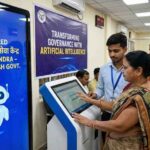For decades, rural India—the heartland of the nation—has struggled with systemic barriers to education: poor infrastructure, a shortage of qualified teachers, and limited access to resources. These challenges have kept countless students from realizing their true potential. Today, however, EdTech platforms are emerging as a beacon of hope, empowering rural aspirations by offering affordable, accessible, and quality education to students who were once left behind.
Eliminating Distance: Education at Their Doorstep
In villages where quality schools and coaching centers are a rarity, EdTech platforms have brought education directly to students’ homes. Through online classes, recorded video lectures, and interactive tools, rural learners are now accessing content taught by some of the best educators in the country. Platforms like Khan Academy, Vedantu, and Doubtnut are closing the educational gap by providing resources that were previously confined to cities.
According to TRAI (2023), rural internet penetration has risen to 45%, driven by affordable smartphones and government initiatives like BharatNet. This digital push ensures that students in remote areas no longer need to migrate to urban centers for quality learning—they can now aspire big from where they are.
Making Learning Affordable for Rural Families
Affordability has always been a major hurdle for rural households, where families often struggle to balance education expenses with daily survival. EdTech platforms have disrupted this by offering free and low-cost alternatives to traditional, expensive coaching.
With freemium models, platforms provide basic learning resources—study notes, recorded lectures, and doubt-solving tools—for free, while advanced features like mock tests and live mentoring are priced much lower than physical coaching centers. A study by RedSeer Consulting (2023) revealed that digital education costs up to 70% lessthan offline coaching, making it accessible for students even from low-income families.
Empowering Rural Students in Their Own Language
Language barriers have historically excluded rural students, many of whom study in regional languages, from quality educational resources. Today, EdTech platforms are offering content in Hindi, Tamil, Telugu, Marathi, and other regional languages, ensuring that rural learners understand concepts without struggling with English-heavy materials.
A KPMG India (2022) report highlights that 40% of rural learners prefer regional language content, leading to better engagement and comprehension. By addressing this linguistic divide, EdTech platforms are ensuring that education is not just accessible, but also inclusive.
Flexibility to Learn Anytime, Anywhere
In rural households, students often balance education with farm work, household chores, or family responsibilities. EdTech platforms provide self-paced, flexible learning, where students can study anytime, anywhere. With downloadable content and offline access, learning continues even in areas where internet connectivity is unreliableor power cuts are frequent.
This flexibility ensures that education adapts to their lives—not the other way around—making it possible for even the busiest students to chase their dreams.
Creating Competitive Exam Success Stories
For rural students, preparing for competitive exams like JEE, NEET, and UPSC was once an insurmountable challenge due to a lack of resources and guidance. EdTech platforms are now equipping these aspirants with:
- Structured preparation modules
- Mock tests and real-time performance analysis
- Live doubt-clearing sessions with experts
This equal access to quality preparation has led to significant results. Data from NTA (2022) shows that 28% of JEE Advanced qualifiers were from Tier-3 towns and rural regions, a sharp rise compared to previous years. EdTech is proving that rural talent, when provided with the right tools, can compete at the highest national levels.
Equipping Rural Youth with Job-Ready Skills
Beyond academics, EdTech is helping rural students acquire real-world skills that make them employable in the digital economy. Platforms like Skill India Digital and Coursera are providing training in areas such as coding, digital marketing, and graphic design, enabling rural youth to access career opportunities that were previously out of reach.
This shift toward skill-based learning ensures that rural students don’t just survive, but thrive in an economy that increasingly demands digital proficiency.
Overcoming Challenges for Lasting Impact
While EdTech has made significant strides, some challenges persist:
- Internet Access: 55% of rural households still lack reliable internet connectivity (TRAI, 2023).
- Device Scarcity: Many families rely on a single smartphone, shared among siblings.
- Digital Literacy: First-generation learners often struggle to navigate EdTech platforms without initial guidance.
Addressing these barriers through improved infrastructure, device subsidies, and digital literacy programs will be crucial for EdTech to reach its full potential in rural India.
Conclusion: A Path to Empowerment
EdTech platforms are more than just tools—they are lifelines of opportunity for rural students. By breaking barriers of distance, affordability, and language, they are empowering India’s heartland with the education it deserves.
The rise of EdTech is ensuring that rural aspirations are no longer limited by geography or resources. With continued advancements and a focus on inclusivity, EdTech holds the power to reshape the future of India’s villages, where every child—regardless of their background—has the chance to dream big and succeed.













